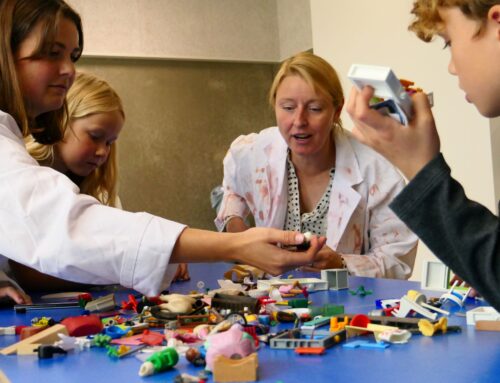
Prime Minister Mette Frederiksen has called for general elections. Kulturprinsen would therefore like to make a case for the well-being of children and young people to hopefully become part of the conversation in the upcoming election campaign - and especially children and young people's own perspectives and voices. Because when are we going to start listening to the people we are talking about - children and young people?
V. Ulla Voss Gjesing, Head of Centre v. Kulturprinsen
At the same time, we hope that the arts and culture will be given the importance they deserve, because it is now clear that it is neither tests nor pressure to perform, but rather creativity, play and community that help to increase the well-being of children and young people in day care and school.
There is a strong desire in society to stimulate children and young people to be critical, independent and democratic. We also ask them in surveys about how they are thriving and what it would take for them to thrive more.
Children and young people have plenty of answers. One of the answers is that they demand the opportunity to be involved in the world and conditions of which they are a part. This is shown by the survey 'The good child life according to children' (2021), which the LEGO Foundation and the think tank Mandag Morgen are behind.
We therefore need to dare to have conversations about how to tackle the challenges of children and young people in new ways, not with old solutions that have long proven not to have the desired effect. For example, an analysis by the Youth Welfare Council (June 2022) shows that over half of young people in the last six months have felt stressed all or most of the time, and that three out of four young people only feel good enough when they are successful in all areas of their lives.
It is also important to get into the election campaign and the general debate that disadvantage is not something that only appears in the 6th grade or high school. It already starts in day-care centres, where both children and their teachers are often under pressure in everyday life, with a lack of calm, presence and time for the individual child due to a lack of hands.
It's not just about sending more money, but also about creating performance-free spaces where children and young people can experiment, use their creativity, play, express their voice and be themselves. It is also about creating good 360-degree interventions around the child in day care, school and leisure. Here, art and culture as part of their everyday lives and interdisciplinary cooperation between artists and educators or teachers can be a major factor in resolving a history of deprivation.
If we don't have children and young people who thrive, we don't have a future. Let this be one of the most important issues in the election campaign we face.

